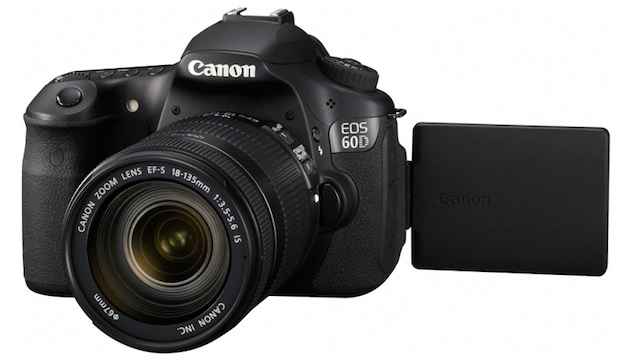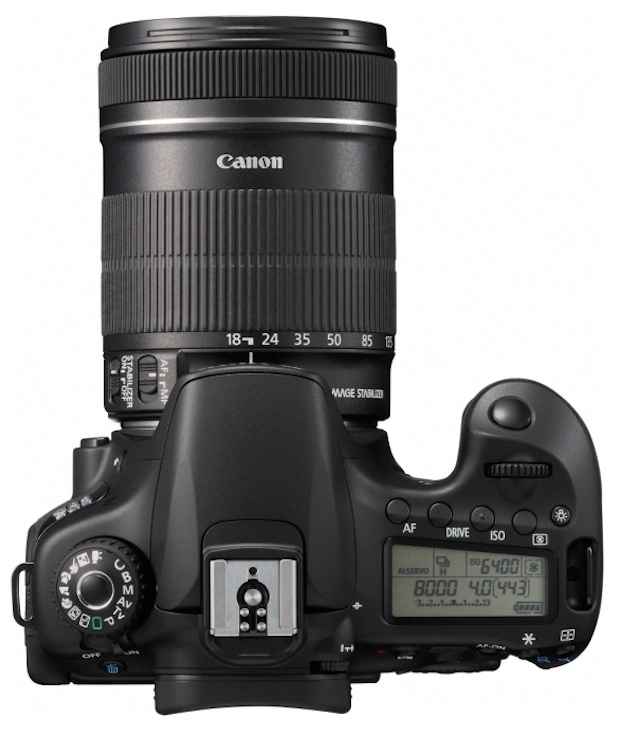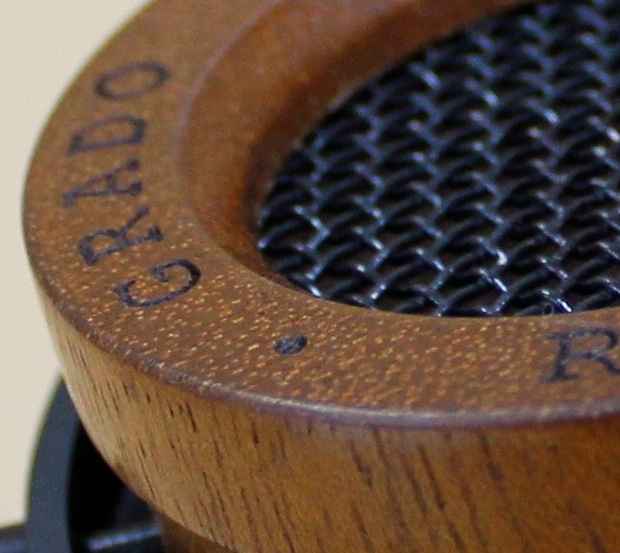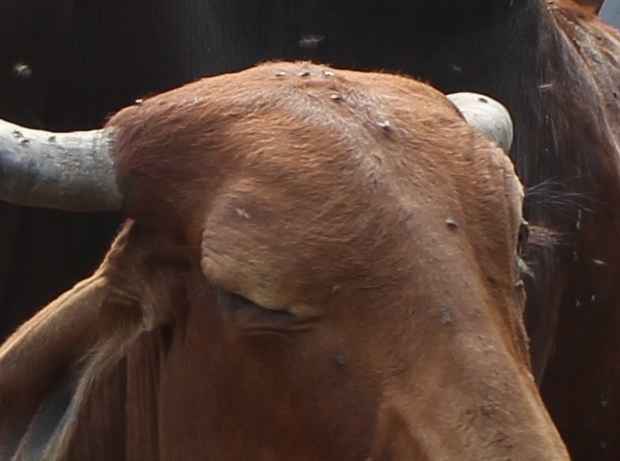Canon EOS 60D – The fence straddler Review
At Rs. 77,195 with a basic kit lens thrown in, the EOS 60D is expensive, considering the EOS 550D will give you close to the same results at a much lower price. The 7D is also only slightly more expensive, and we see many opting for the more professional body and definitely superior build and ergonomics. It is an interesting option with great performance, that should provide the D7000 with tough competition, but Canon and Nikon have been guilty of trying to serve pros and newbies alike in the past, and this usually ends up being a deal breaker for both classes of users.
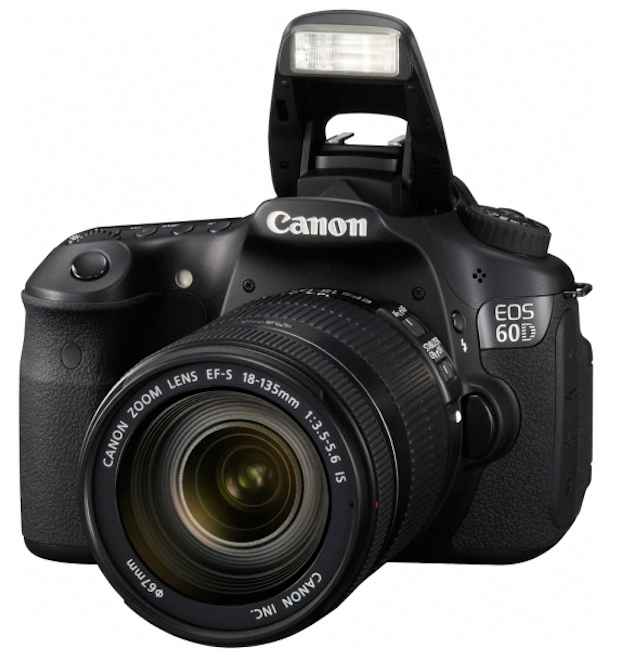
Before reading up the review on the EOS 60D, you might want to check out our detailed EOS 7D review, where we not only tested the 7D, but also covered some basics including crop sensors and focussing. For the record, the 60D was never meant to replace the 7D, which is priced higher and has better ergonomics and a better build, but is aimed at gently nudging the older EOS 50D along the road to obsolescence.
Features at a glance:
-
18 megapixel APS-C CMOS sensor
-
9-point autofocus system (all cross-type)
-
0.95x magnification with 96 per cent viewfinder coverage
-
1080p HD video recording with manual controls
-
5.3 fps continuous shooting
-
Articulated 3-inch, 10,40,000 dot LCD
If you bother to read the 7D’s feature set, you’ll see the 60D gives up quite a few of the pro-grade features that will appeal to enthusiasts like faster continuous shooting, faster operation with dual Digic 4 processors, viewfinder and focussing system. What it does offer is the same sensor, and at least what we’re hoping, similar ISO performance to its spiritual predecessor.
Size and build
[RELATED_ARTICLE]The 60D is visibly smaller than the EOS 7D, and the top is lower, owing to a slightly smaller pentaprism bulge. Although the 60D is a comfortable fit in-hand, it’s not as comfortable as the 7D, whose larger body was more reassuring to grip. The rubber coating on the 60D feels a little less meaty. The magnesium alloy frame is dropped for a more conventional (and cheaper) polycarbonate body, and the LCD gets a polycarbonate coating, rather than the hard glass surface on the 7D. On its own, the 60D feels solid in-hand, definitely a lot chunkier and more reassuring than the EOS 4xx/5xx series of camera bodies. It compares favourably to Nikon’s D90 and the much cheaper D5000, but when handled side-by-side with the Nikon D300s and Canon EOS 7D, it is not as well built, obviously so, for build is simply a function of price. From all accounts, Nikon’s new D7000 also seems a lot more robust, at least in the partial use of a magnesium alloy frame, however, we feel the use of exotic metals in the construction of such cameras is mostly of use for those shooting in extreme weather and handling conditions. After all, how many of us will bang or drop our cameras on a regular basis? Even the EOS 1000D will survive more than a handful of drops, and such reinforcing adds to the price, meaning a reduced feature set for the same price. After all, if you shoot for the National Geographic channel, you’ll probably use a Nikon D3x or Canon 1Ds Mark 3, and never bother with anything lower, right?
The buttons and keys on the body are well built and particularly the famous main dial atop the body feels as good as the 7D’s, while the rear dial is more clicky – the 7D was a quieter in operation, and felt a lot more rugged. The articulation of the LCD seems pretty robust, although we’re not fans of moving parts. We feel this component should wear pretty well.
The battery compartment is small, understandably since it holds an SD card, and not the larger CF variety. It is reasonably well built, opening with a nice snap, and has a decent spring action. It’s not as robust as the 7D’s card door, but we didn’t expect it to be. The battery door in comparison, is very plasticy, and there is no spring – unlike the thick plastic and robust spring on the 7D with its robust spring and with the 60D, the door needs to be manually lifted once you unfasten the clasp. The battery is the same 1,800 mAh unit that does duty on the EOS 7D. The flash unit is the same one on the EOS 550D, and a little different from the marginally longer range 7D flash, although it gains the 7Ds ability to control groups of flashguns wirelessly, which is neat, though we wonder how many users in this price group, will really use this feature.
Click next to read about ergonomics and operation
Controls, operation and ergonomics
To many people, the articulated LCD is a great feature, we do not agree. Sure, newbie’s will want to use live mode, but enthusiasts will prefer the viewfinder. The LCD should only be used for viewing images after they are taken and not framing subjects. Even if you keep the LCD open all the time, thereby improving ergonomics, (for you needn’t open it to preview the results of a shot), the ergonomics and button placement on the 60D is a bit botched up. The EOS 7D got button placement down to an art, and once you got over the overwhelming number of buttons and controls, it was easy to appreciate their presence. The 60D loses the vertical stack of buttons on the left side of the rear in favour of the articulation armature, and these buttons find themselves mashed together haphazardly on the right side. The power switch is similar to the one on the 7D and very heavy duty. The LCD is the same 10,40,000-dot unit in the EOS 550D, and it’s excellent and crisp.
[RELATED_ARTICLE]The play and delete button are located on polar opposites, one at the bottom of the camera, to the right of the LCD and the other atop the LCD to the left. This makes no sense, as one is forced to reach for the delete button every time. The menu and info buttons have lost their bevelling and while button feedback is good, there just isn’t enough of a physical cue for your thumb-pads. The video/still switch is absent, video shooting being present as a selectable option on the mode dial. The mode dial itself now has a lock button atop it that needs to be pressed before the dial spins. This prevents accidental brushing with surfaces changing settings. On the 7D, the wider girth meant this button had less chances of accidental contact. However, recently, Canon announced that that this replacement dial was available for a small fee for both the 7D and 5D Mark 2 cameras, both of which are older, higher-end models compared to the 60D. Note that while this dial lock is useful and a definite plus, it also makes using the dial a plus-one step affair.
The 4-way joystick on the EOS 7D is missing on the 60D. Instead, it’s inset in the rear dial, and is a joypad i.e. flat. This gives your thumb a smaller surface area to interface with the dial, and since the height of both dial and joypad is the same, and as a result, the system is less intuitive. In fact the rear dial, besides being smaller than the comfortable and uber usable one on the 7D, is also a lot less usable for the same reason. Losing the buttons on the left a major bummer. However, this is all subjective, and anyone migrating from an EOS 4xx/5xx series of cameras with sparser buttons will still find a wealth of manual controls. Everything is configurable, and the ability to map buttons to certain oft-used functions is a strong point. Canon’s menu system is detailed but this is to be expected when a wealth of settings have been provided.
The status LCD is present, although it’s a bit smaller than the 7D. The buttons below the LCD feel the same as the ones on the 7D, the ones above it – not so. They’re flat, with no bevelling and exude cheap, clicky feedback, and are no comparison to the excellent ones on the 7D. Only a raised dot on the centre of each button is any indication for your fingers. However, to keep this in perspective, status LCDs in general are a plus, and the 60D is better off with it, than without. The shutter button feels the same, although the 60Ds shutter is slightly more muted than the 7D, and if anything, (surprisingly!), feels a little better.
The viewfinder is not as bright as the 7D, and the 9 focus points are the permanent etched type, unlike the 7D that used a transmissive LCD to paint the focus points on the viewfinder. The 7D was a benchmark for Canon, and we’d hoped the older system of viewfinders would be defunct. At least the 60D is a lot cheaper than the EOS 5D Mark 2 that also features this archaic viewfinder. But then we’re expecting a 5D Mark 2 replacement soon…
In practice, the 60D is a nice feeling camera, with a good amount of control buttons, that will be a step up for someone migrating from a compact camera, or an entry-level dSLR like the Canon EOS 1000D. People who have used, (or own), an EOS 7D will not be impressed.
Click next to read about its performance
Performance
We’re dividing the performance section into two subsections:
1) Speed and battery life
2) Image quality
Speed and battery life
The 60D is reasonably fast at 5.3 fps in continuous fire (burst) mode, but slower than the speedier 7D (8 fps). However, there are other aspects of speed, and burst mode is only useful for sports photographers or someone looking to shoot wildlife, where a string of photographs might tell a story. The 60D is slower than the 7D across the board. Live view is slower, toggling between image mode and video mode is slower with the display blacking out for a whole one and a half seconds. Focussing is also slightly slower, and in lower light, this becomes more noticeable. Obviously, the focussing system is inferior, but we didn’t expect it to be much slower. Where speed is critical to get or miss a shot, the 7D should be preferred. However, even with one Digic 4 processor less, the 60D is no slouch in its own right. Camera on to shot is extremely fast, and in less than a second, you can click off a shot.
[RELATED_ARTICLE]The LCD viewfinder is pretty good, in fact about as good as we’ve seen. The 1,040,000 dot display means its plenty sharp, and crisp, and minimal zooming is required to check sharpness of an image. Incidentally, burst mode will have the first flurry of photos taken quickly, then, as the camera runs out of available buffer, the speed slows down till the buffer has written enough to the memory card to accept more data. And now a word on the de facto kit lens – it offers good sharpness, reasonable even in the corners, especially considering the lens is available for around Rs. 6,000 – practically a give-away. However, it doesn’t hold up to better glass very well, and if you’re serious, you ought to consider ditching the kit and opting for something like the 15~85 IS USM lens – it’s much costlier, but has a more practical focal range, and offers better colour, sharpness and overall performance, including focussing is faster. The USM motor also makes it dead silent, although the 18~55 is not as noisy as the Canon f.1.8 50mm.
The battery is hefty, the same one as the EOS 7D, rated at 1,800 mAh. Canon states battery life to be over 1,000 shots, we found that clicking some 150 shots with flash used one fifth of the time hardly drained any juice, and the battery still showed 80 per cent charge – pretty good. You certainly won’t need to carry a spare, unless you’re going on a long trek.
Image Quality
This is pretty much bread and butter for any dSLR. And this is where the 60D proverbially kicks butt. It is capable of producing excellent results, in fact the output of the 60D is clean, neutral and full of details. One of the advantages of cramming 18 megapixels on to a smaller 1.6x crop sensor is the sharpness. The 60D produces very sharp images in good and mediocre lighting. There is a lot of detail visible and the high resolution helps. The tradeoff is usually lower performance in low-light, owing to high density of photodiodes, but the 60D survives this techincal restriction rather well. Even in low light, and higher ISO’s, images retain a lot of detail – it’s obvious that the 7D sensor is working its magic on the output of the 60D as well. Even at ISO 1600, the 60D manages a lot of detail, with some smearing of detail happening in darker regions of the image, and with a bit of grain. At ISO 3200, the 60D leaves the 50D behind by a big margin, proving that a current-gen, 18-megapixel is a lot better than a 15-megapixel unit of yesteryear. If you shoot in RAW, you will be able to extract even more detail.
The 60D is very sharp at the corners, even visible with the default 18~55 kit lens as the above photo demonstrates. In fact, the headphone cup shown above was at one centre of the image. This seems to be in part due to the kit lens. Check out the 7D’s performance results here for a comparison. Canon supplied us with the standard 18~55 kit lens, which is an entry-level one, and not up to the 15~85 lens we were using on the EOS 7D. Swapping lenses, we see the 60D sharpen up at the corners, however, not as sharp as the 7D, where depth appears more pleasing. The 18~55 lens is plagued by vignetting as well as chromatic aberration in moderate doses. Not only that, the 60D’s focussing system seems a bit dumber, simply choosing to focus on whatever the closest object in the frame, compared to the 7D’s focussing system that seems almost intelligent – focussing uncannily on the desired object. Also from ISO 640 onwards, the 60D exhibits slightly more noise on a per-pixel level than the 7D, images have slightly more grain, we double checked to make sure, and the difference, although small, is present.
Although an unfair comparison, the 60D as good as it is, cannot match the low light output of the EOS 5D Mark 2. However, comparing a 70,000-rupee crop body to a Rs. 1,25,000 full-frame body is silly, and the Mark 2 easily gains a one stop advantage, possibly two, as even ISO 3200 is relatively noise free. If you plan on shooting in low light, your best bet is still a full-frame dSLR. However, the 7D offers better low light performance, which is kind of surprising, as the sensor used is the same. At ISO 800 and up to ISO 1600, is where the difference shows. At ISO 3200 the output of the 60D is marginally more noisy than then 7D, and at ISO 6400, they’re both pretty pointless, unless you need really small images.
Let’s talk about shooting in better light and dynamic range. The 60D has an option called “highlight tone priority”, and turning this on results in more details in bright areas of a scene, by applying a lower amplification algorithm to the sensors signal. All Canon dSLR cameras have this feature, Nikon’s equivalent is called “D-lighting”, and these are nothing but dynamic range expansion modes. Highlighting is good, and the 60D produces life-like highlights on objects, although with the aforementioned mode turned off, bright regions look a little overblown, as the 60D tends to overexpose them, losing some detail.
Full frames aside, the 60D provides very good image quality up to ISO 800 and at ISO 1600, you can make make medium size prints, certainly full screen viewing is very possible. At ISO 3200 things suddenly get noisier, although there is still a fair bit of detail, with only grain showing up in darker regions and a some off-coloured pixels. ISO 6400 is usable for small crops, but at this point, you lose a fair bit of details. This is pretty much in line with the performance of the EOS 7D, although the 7D is slightly better at ISO 800 onwards. Only full frames will offer better performance, and these crops have already pushed the boundary of high ISO performance sufficiently outwards. For those who scoff, remember that with film cameras, ISO 800 film was pretty much used only in emergencies. The flash performance of the 60D is pretty good, with good exposure, but it tends to fail as a good fill, meaning the difference between the subject and the environment is a little extreme. Ideally a flash should be subtle, and the 60D is a little too blatant, but then, so was the 7D – Canon’s external flashguns are an alternative, albeit a costly one, that most amateurs will not bother with.
Click next to read our final take on the 60D
Our Take
At Rs. 77,195, for the body and a 18~55 kit lens, the 60D is somehow costlier than what we expected when we first opened the box and clicked a few shots. And that’s not a good thing – for some products just feel worth their price. However, it is a very competent camera, offering very good image quality and equally impressive low-light performance, that would have been unthinkable on crop bodies two years ago. Both RAW and JPEG images have a lot of detail and on these points alone, its hightly recommended. However, it’s not perfect.
[RELATED_ARTICLE]The iffy ergonomics are aimed at making it more usable to the newbie crowd who are graduating from a point-n-shoot, where a wealth of buttons and controls would only overwhelm. However, Canon has a missed a point, for both users graduating from a basic Canon or Nikon body, and advanced users looking for a second, lighter crop body to go with their full frames, the 60D isn’t exactly first choice. After all, you get a 550D that does nearly as much, with maybe a smidgeon lower performance at ISO 1600 and upwards, that costs around Rs. 47,000 on the lower side. On the upper side, there’s the EOS 7D,with vastly improved ergonomics and build quality, with a definite advantage in the focussing system, and a very slight advantage in low light, and dynamic range. The price difference between the 60D and 7D is not huge, but at around Rs. 15,000, we reckon a lot of enthusiast users will opt for the costlier model. For some, the swivel LCD will actually be a deal breaker. Unless, the articulated LCD appeals to you, and you want something smaller and lighter than the 7D. Neither will 50D users consider the 60D, more like they’ll save up for the 7D, or better glass, or simply go full frame. Considering Nikon’s D7000, the 60D has a fight on its hands, but the D7000 seems to have inherited ergonomics from the D90, whereas the 60D isn’t quite pro or amateur – an interesting divide to attempt to straddle. It’s a great camera, but we feel it could have been much more.
Specifications: Sensor: 18-megapixel CMOS 22.3 x 14.9 mm ; Focussing: 9-cross point; 3-inch, 10,40,000 dots; weight: 755 grams; battery: 1800 mAh
Rating:
Features: 8
Performance: 7
Build: 7.5
Value: 6.5
Overall: 7
| Brand | Canon |
| Model | EOS 60D |
| Price (Rupees) | 77195 |
| Specifications | |
| Sensor resolution (MegaPixel) | 18 |
| Sensor size (mm) | 22.3 x 14.9 |
| Sensor type | CMOS |
| ISO (low) | 100 |
| ISO (high) | 6400 (12800 in H1 mode) |
| Shutter speed (fastest) | 1/8000 sec |
| Shutter speed (slowest) | 30 seconds |
| Continous Drive | 5.3 |
| Focus system | 9 focus points, all cross type |
| Display | |
| LCD size | 3.0-inch |
| LCD Resolution (pixels) | 9,20,000 dots |
| Formats support | |
| RAW | Y |
| JPEG | Y |
| TIFF | N |
| Features | |
| Mic in | Y |
| HDMI out | Y |
| Video | |
| Max Resolution | 1920 x 1080 (1080p) |
| Battery | |
| Type (AA, Li-ion) | Li-ion |
| Capacity (mAH) | 1800 mAh |
| Memory card | |
| Memory cards used | SD (SDXC support) |
| Dimensions (in mm) | 145 x 106 x 79mm |
| Weight (in grams) | 755 grams |
| Performance (with 18~55 Canon lens) | |
| Focussing accuracy (wide angle) | 8.25 |
| Focussing accuracy (long end) | 8.25 |
| Quality (dynamic range, highlighting) | 8 |
| Quality (sharpness, micro-detail) | 8 |
| High ISO tests (So 10) | |
| ISO 800 | 8.25 |
| ISO 1600 | 7.5 |
| ISO 3200 | 7 |
| ISO 6400 | 6 |
| Flash test (portrait) | 7.25 |
| Flash test (fill-scene) | 6.75 |
| Video Quality (720p) | 7.25 |
| Video Quality (1080p) | 7.5 |
| Build Quality and Ergonomics (So 10) | |
| Body | 7 |
| Lens | 5 |
| Buttons and dials | 7 |
| Ease of use | 6.5 |
| Interface | 6.75 |
| Bays | 7 |
| Screen |
Company: Canon India Private Limited
Phone: 1800-345-33-66
E-mail: info@canon.co.in
Website: www.canon.co.in
Price: Rs. 77,195 (MRP, body 18~55 lens)

